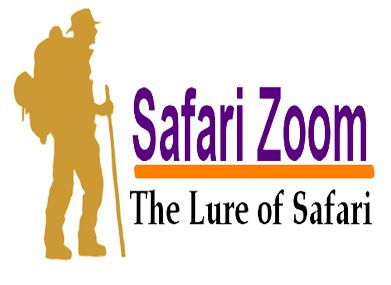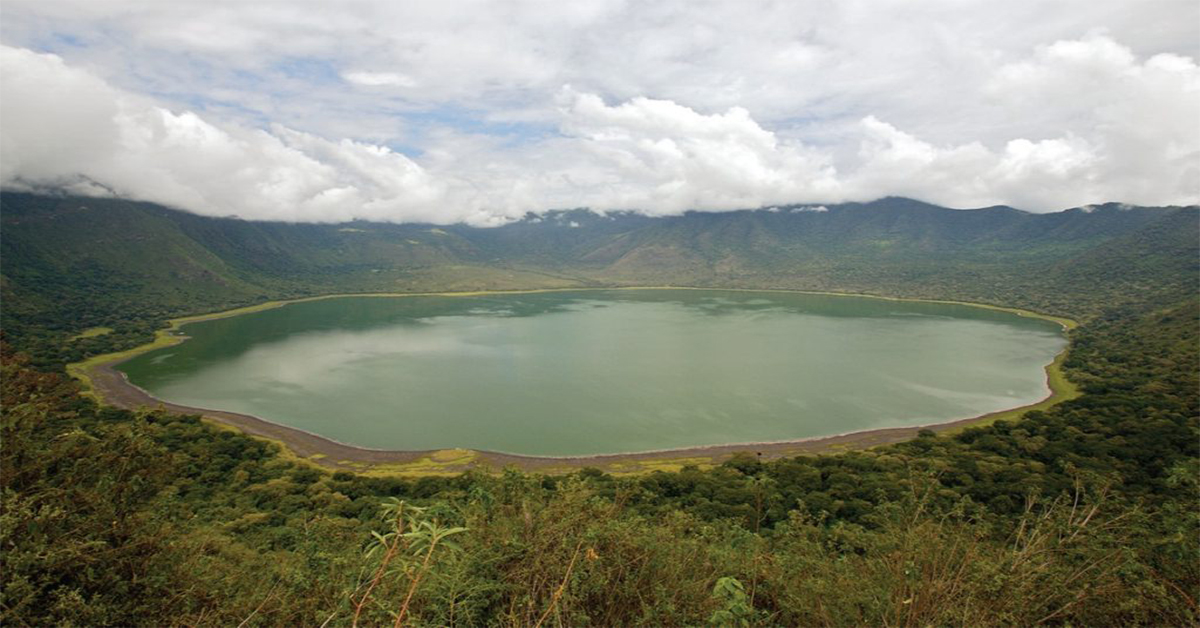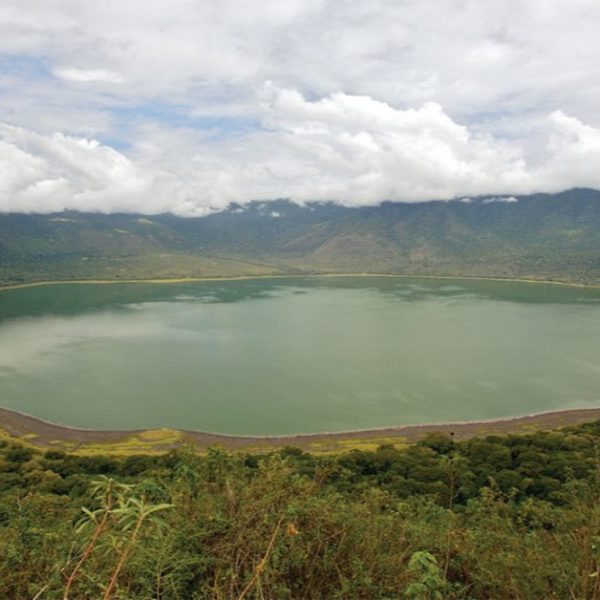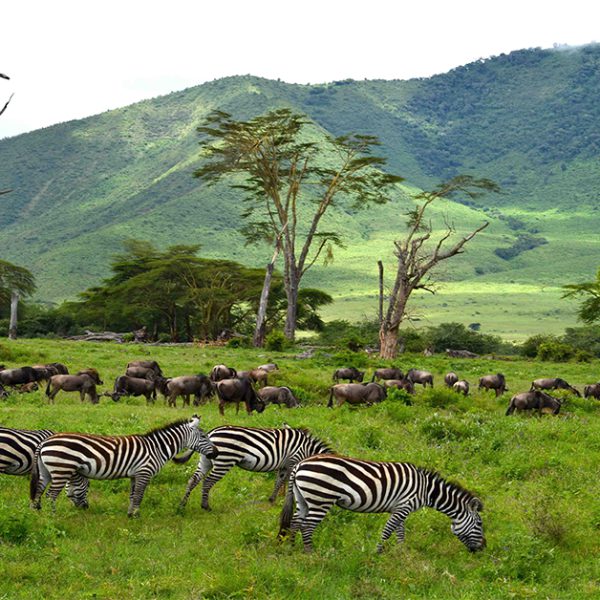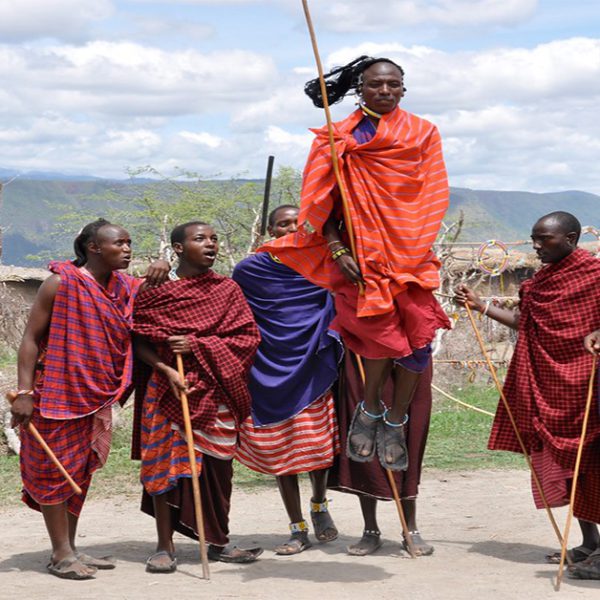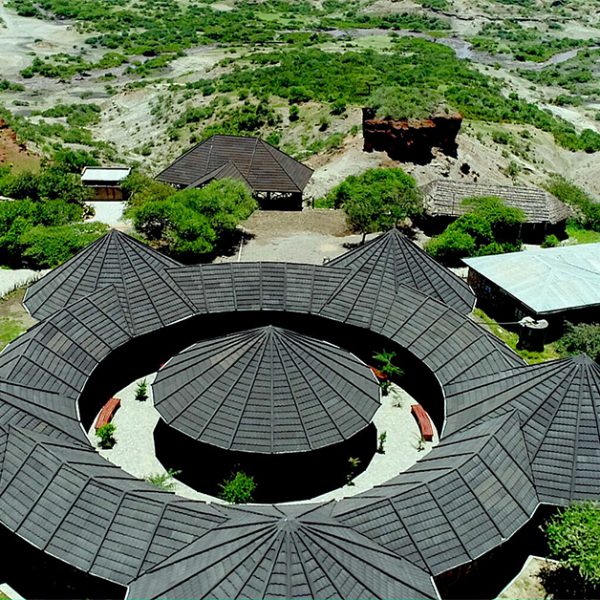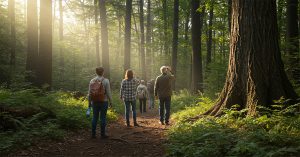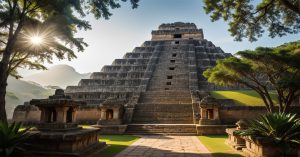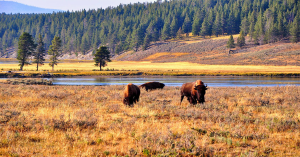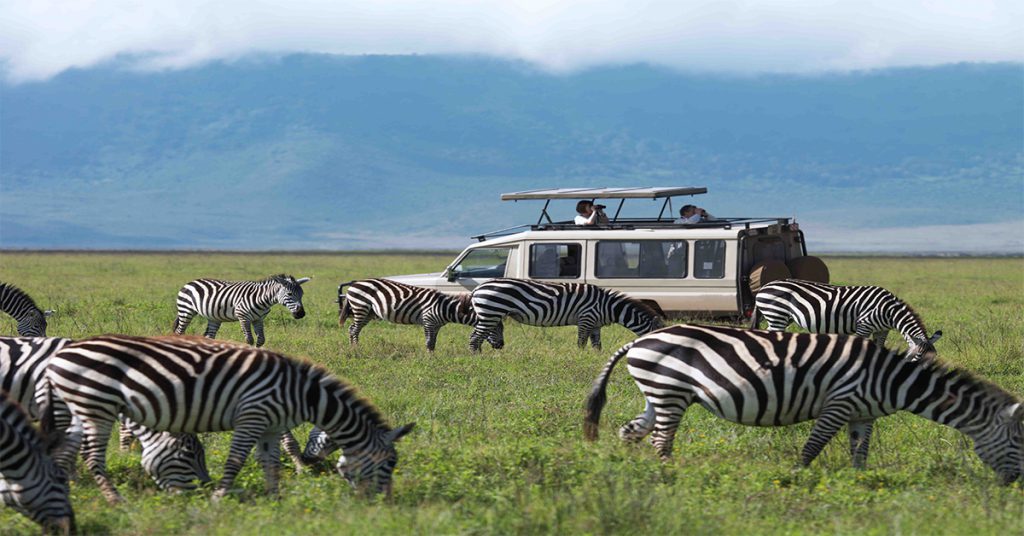
Summary
Ngorongoro Conservation Area is in northern Tanzania, Situated about 180 km west of Arusha. It’s home to the vast, volcanic Ngorongoro Crater and “big 5” game (elephant, lion, leopard, buffalo, rhino). Huge herds of wildebeests and zebras traverse its plains during their annual migration. Livestock belonging to the semi-nomadic Maasai tribe graze alongside wild animals. Hominin fossils found in the Olduvai Gorge date back millions of years.
Inscribed as a UNESCO World Heritage Site in 1979, it covers 8,292 square kilometers of magnificent grass plains, acacia woodlands, and crater-filled highlands. It is named after the world’s largest intact and unfilled caldera.
The area is located to the North and North-West by the Serengeti National Park, Lake Natron to the East, the left arm of the Great Rift Valley to the South, and Maswa Game Reserve to the West. Its altitudes range from the lowest areas, the main Crater (600 m) to the highest point, the Oldonyo Lengai (2,962 m).
Are you in a Hurry? Check Tours Activities In and Around Ngorongoro Conservation Area
Table of Contents
ToggleNgorongoro’s History
Ngorongoro was named after Ngorongoro Crater, (which means “the black hole” in Maasai) world’s largest unbroken and unfilled volcanic caldera. The crater was formed by a major volcanic eruption.
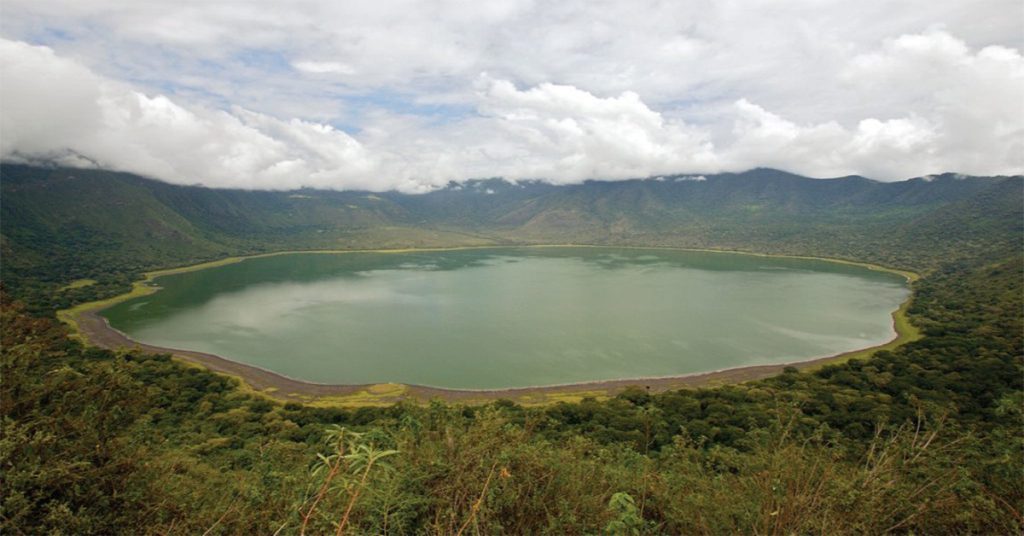
Ngorongoro was part of Serengeti National Park until 1959 when the two were separated into two different Protected Areas with different conservation status. The Ngorongoro Conservation Area was established as a multiple-land use area, where wildlife could co-exist with the semi-nomadic Maasai, who move from one place to another in search of water and pasture. The Maasai are a pastoral tribe that has managed to preserve its culture over hundreds of years, living in harmony with the wild animals. The NCA was therefore established as an experiment to maintain a balance between pastoralism, conservation, and tourism.
Before the arrival of the Maasai in Northern Tanzania in the 1800s, the Area was occupied by other tribal groups (including The Mbulu and The Datoga), beginning with hunter-gatherer tribes that were replaced by groups of pastoralists earlier on. During the colonial period, the Area was mostly a hunting ground for European hunters. In 1928, hunting was prohibited in the crater.
The National Park Ordinance of 1948 (implemented in 1951) created the Serengeti National Park, of which Ngorongoro was part. This, however, caused problems with the Maasai, resulting in the split of the two protected areas. The 1959 ordinance also created Ngorongoro Conservation Area Authority, an administrative body to manage the Area as a parastatal organisation. The authority is under the supervision of the Ministry of Natural Resources and Tourism (MNRT).
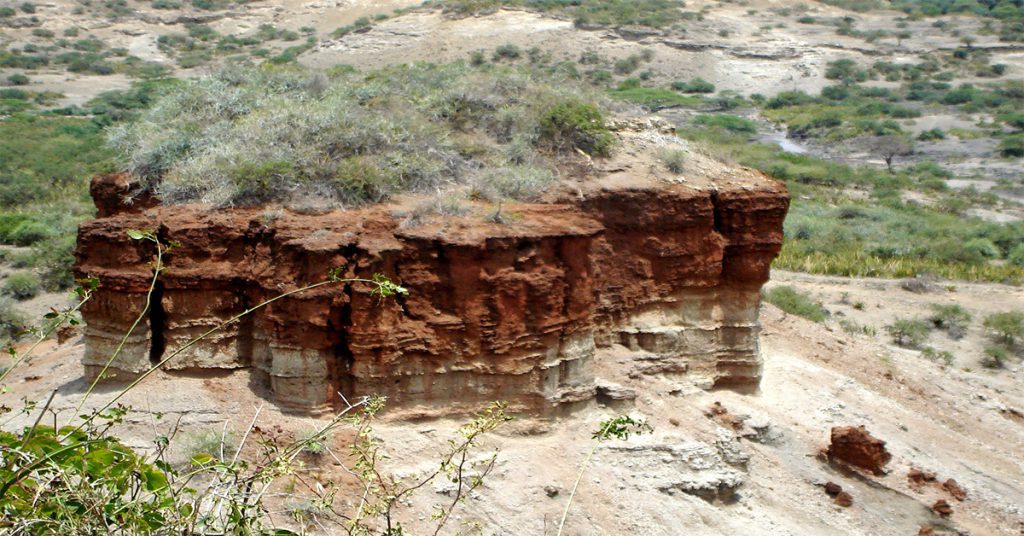
Why Ngorongoro Conservation Area was established? (Purpose of Ngorongoro Conservation)
- To maintain a dynamic multiple land use system which preserves the balance of people and Nature
- To conserve the biodiversity and ecological integrity of the Serengeti ecosystem and Ngorongoro highlands
- To conserve the area’s internationally significant paleontological and archaeological sites and resources.
- To protect water catchments vital to the region’s ecology and residents
- To safeguard and promote the rights of indigenous residents of the area to control their own economic and cultural development in a manner that leaves exceptional resources intact.
- To encourage responsible tourism which benefits the local, regional and national economy
- To provide an opportunity for interpretation, education and research concerning the area’s natural and cultural resources.
- To maintain and promote those values for which the area is designated as a world heritage site and international biosphere reserve.
Getting There
Most visitors approach the Ngorongoro Conservation Area from the town of Arusha, about 180 kilometres away. Arusha can be easily accessed via domestic transfer from Julius Nyerere International Airport (DAR) in Dar es Salaam or Kilimanjaro International Airport (Kilimanjaro.
The road from Arusha to Ngorongoro Conservation Area is good and is paved; it enters the Conservation Area through the Loduare Gate near the town of Karatu.
Another common entry point is from the west, from Serengeti National Park, on a gravel road through Naabi Hill Gate. It is also possible to get to Ngorongoro Conservation Area by flying a charter plane. There is an airstrip on the crater rim; close to the headquarters of Ngorongoro Conservation Area. Other local airlines have scheduled flights from Arusha, and other major destinations in the country to Serengeti next door, which makes an easy connection to Ngorongoro.
Game-viewing safaris around Ngorongoro Conservation Area, and particularly entry into Ngorongoro Crater, are restricted to four-wheel-drive vehicles (4WD) only.
There are various tour companies that offer safari services to Ngorongoro Conservation Area and other wildlife areas in northern Tanzania, usually as part of a tour package. For visitors who have no experience of African travel, an organized tour is highly recommended. Details of tour companies that can arrange your safari can be obtained from a travel agent, from the Tanzania Tourist Board, or from the Tanzania Confederation of Tourism. Most tour companies offer full packages that include transport, entry fees, accommodation, and transfers from airport.
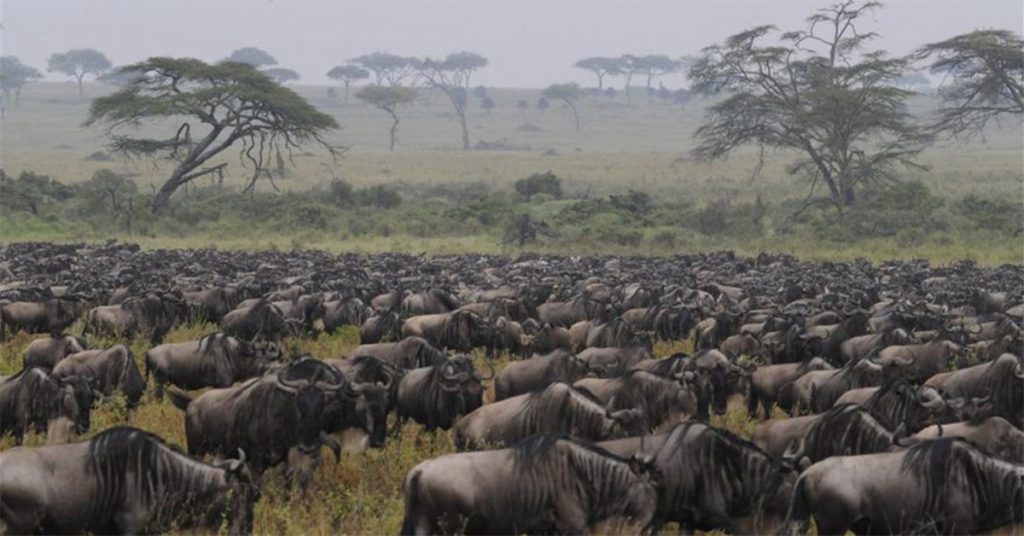
Time to Visit
The Ngorongoro Conservation Area is a destination for wildlife viewing that can be visited at any time of the year. Unlike on the plains, where the numbers of animals is dictated by the availability of food and water, abundant game is present inside the crater year round because food and water are always available for both herbivores and predators.
However during the dry season, especially from June to October. It is extremely popular season to visit the area because wildlife is more visible and easier to spot, due to dryness of the landscapes and also most of the game can be spotted near the water.
Outside the crater, but still in the conservation area, from around December to May (depending on the rains), over one million wildebeests and thousands of zebras and gazelles move south to calve in the short-grass plains around Ndutu that straddle the conservation area and Serengeti National Park. This is the area where the animals regroup to start the annual wildebeest migration that spans through the Serengeti ecosystem.
For birders, the period from November to March is the best time to see migrant bird species, in addition to the indigenous species. Botanists will enjoy most the wet season, which runs from March to early June.
What to Do in Ngorongoro
Ngorongoro is one of the best destinations in Tanzania, a visitor to the area will be able to see a wide range of attractions ranging from wildlife, archaeological site, mountain climbing and cultural tourism.
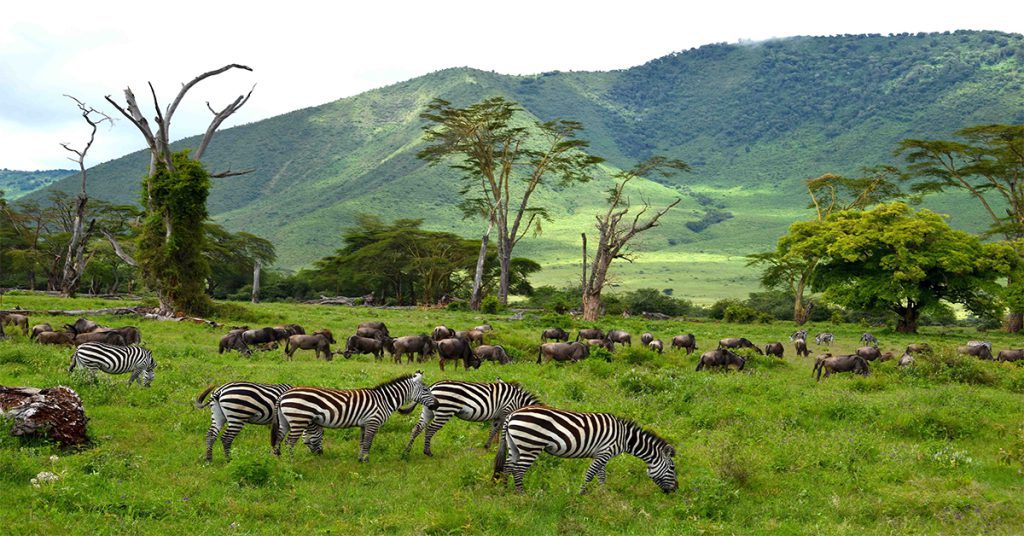
Amazing Wildlife
Around 550 bird species have been recorded in the Ngorongoro Conservation Area, of which 400 can be found in the crater itself. The region’s dense acacia woodland is home to the world’s largest known population of the near threatened Fischer’s lovebird, while the Gorigor Swamp is an important habitat for aquatic species like the whiskered tern and African rail. One can see birds at Lake Magadi, a Salt lake on the floor of the crater often thousands of lesser flamingos can be observed, Flamingos can also be seen at Lake Ndutu and in the Empakaai Crater Lake.
Many of the birds found in the conservation area are unique to Tanzania or East Africa, including endemics and near-endemics such as the Jackson’s widowbird, the Hartlaub’s turaco, hornbill goshawk, Montagu’s Harrier and the rufous-tailed weaver
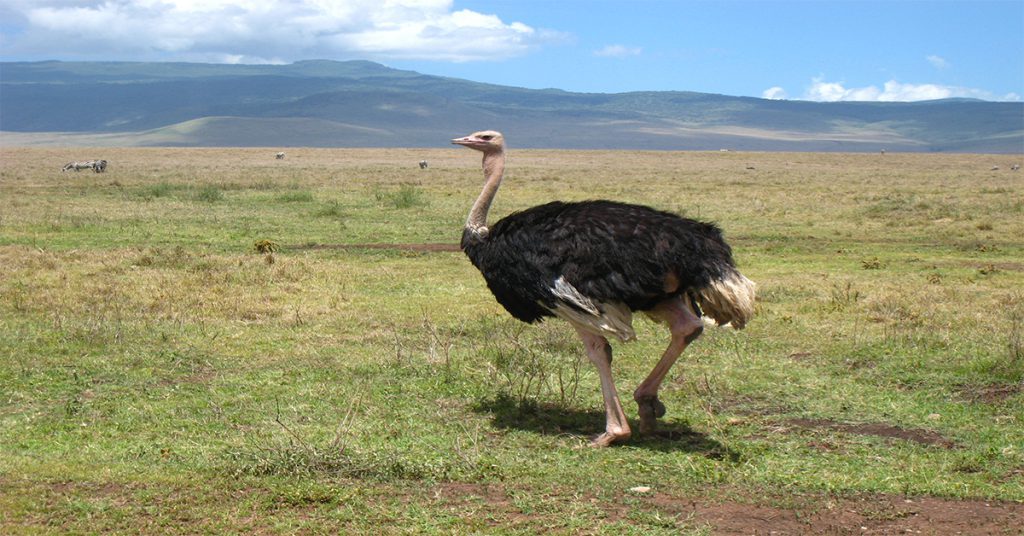
Apart from birds, there have been 115 species of mammal recorded in the Ngorongoro Conservation Area. The two main areas for game-viewing, apart from the crater, are the short-grass plains west of the Gol Mountains, northwest of Ngorongoro Crater, and the surroundings of Lake Ndutu close to the border with Serengeti National Park. The two areas become the feeding and breeding ground for over 2 million animals during the rainy season as they support the great annual wildebeest migration that spans the Serengeti ecosystem. From around December to May (depending on the rains), over one million wildebeests and thousands of zebras and gazelles move south to calve in the short-grass plains around Ndutu that straddle the Conservation Area and Serengeti National Park.
Elephants, elands, hartebeests, and endangered rhinos are among the residents of the crater. There are also resident zebras and wildebeests in the crater that do not take part in the annual migration. Hippos are found in the permanent freshwater pools and the swamps in the crater. Other non-migratory herbivorous mammals that are found in the Conservation Area include buffalos, waterbucks, warthogs, kudus and other species of antelope. Giraffes live in the surroundings of Lake Ndutu, where acacia trees are abundant.
The carnivores found in the Ngorongoro Conservation Area include lions, cheetahs, hyenas, leopards, jackals, serval cats, and endangered wild hunting dogs.
Archaeological attractions Olduvai Gorge
Olduvai or Oldupai Gorge is named after a native wild sisal plant (Sansevieria ehrenbergii) which grows abundantly in the area, it’s the most famous archaeological location in East Africa, and has become an essential stop for travellers to Ngorongoro or Serengeti. It is located about 40km northwest of Ngorongoro Crater, just a few kilometres off the main Serengeti road.
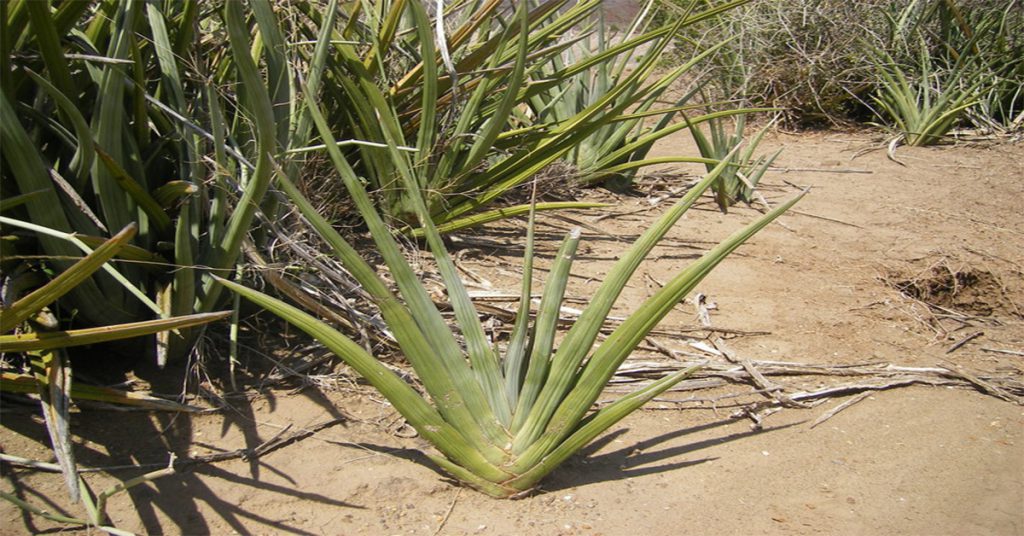
The site holds the earliest evidence of the existence of human ancestors, the records of the site are dated as far as 1911 when the German entomologist Professor Wilhelm Kattwinkle found the initial fossils in the gorge that lead to many great discoveries. Kattwinkel found the teeth of an extinct three-toed horse known as Hipparion. In 1931 Louis Leakey visited Olduvai Gorge, He and his wife Mary Leakey discovered Zinjanthropus boisei in 1959, then the oldest significantly intact hominid fossil from Olduvai Gorge. This skull, plus other archaeological finds from Olduvai Gorge are housed in the national museum in Dar es Salaam.
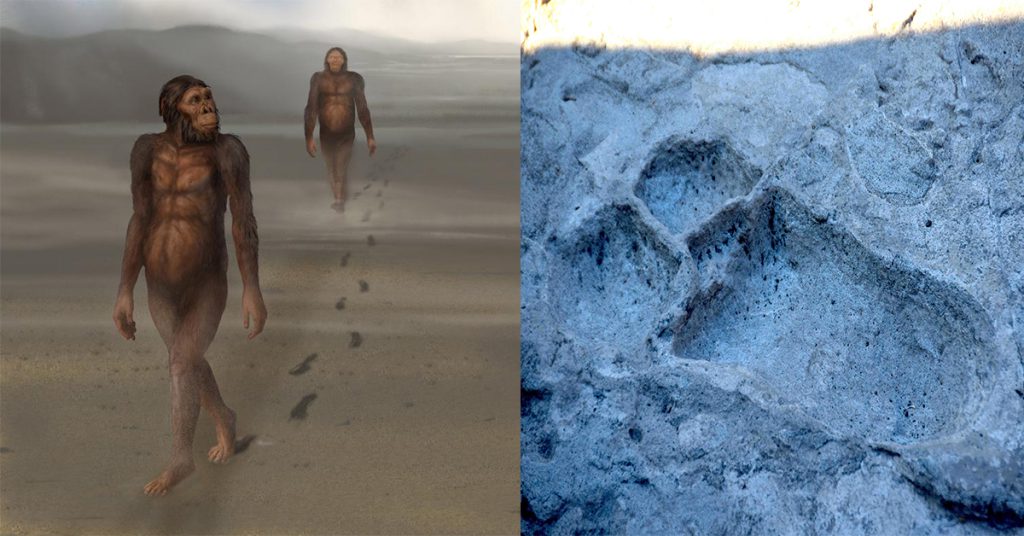
Olduvai Gorge museum
A museum dedicated to showing the history and information about the findings made in and around the Olduvai Gorge and Laetoli fossil sites. The museum exhibits numerous fossils and stone tools of our hominid ancestors, and skeletons of many extinct animals, it has a separate dining area, a curio shop and a lecture room.
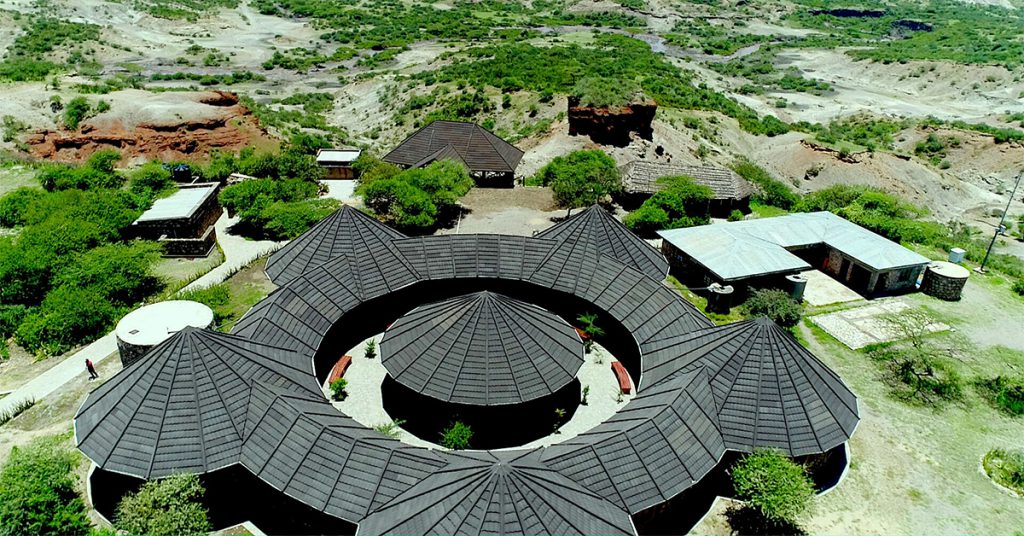
Nasera Rock
It’s a huge gneiss inselberg that is located about 27 km north of Olduvai Gorge. Its source of various archaeological findings most of which are stone artefacts high in quartz and obsidian, bone fragments and sherds of pottery – dated to as far back as 30,000 B.C.
Nasera Rock is also a spot for climbers and bird watchers. The eastern side of the rock is gentler and enables climbers to reach the top and admire the magnificent view of the plains in the area.
One can also see rocks paintings and wildebeests which can be observed well in the wet season.
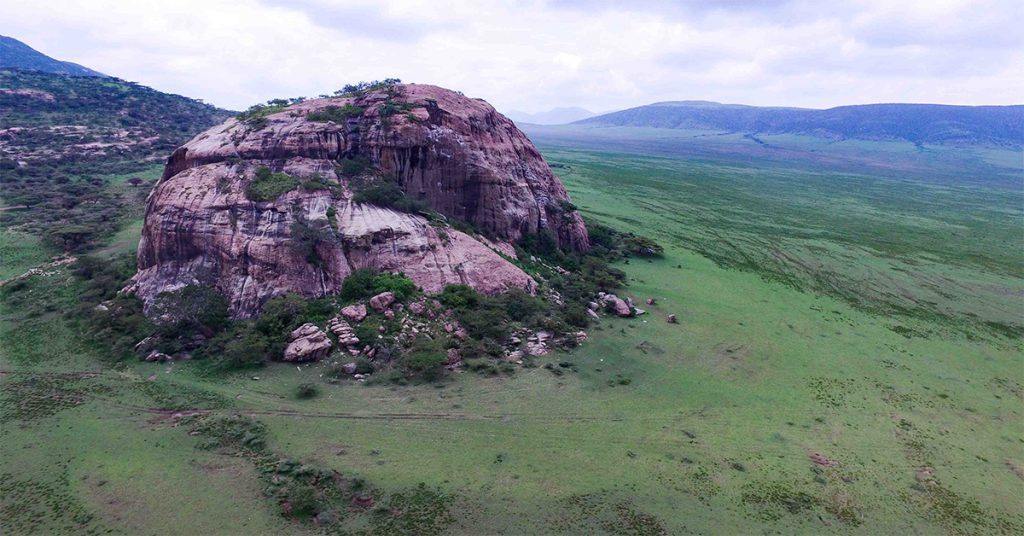
Laetoli Footprints
These are the footprints most likely made by Australopithecus afarensis, an early human whose fossils were found in the same sediment layer. The entire footprint trail is almost 27 m long and includes impressions of about 70 early human footprints.
The site of Laetoli is 25 miles to the southwest of Olduvai Gorge, About 3.6 million years ago in Laetoli, two early ancestors of humans walked through wet volcanic ash. When the nearby volcano erupted again, subsequent layers of ash covered and preserved the oldest footprints of early humans.
The Laetoli area was first studied by the German entomologist Kohl Larsen in the 1920s and yielded a few fossils. In 1974 a team led by Mary Leakey made the discoveries of the hominid footprints, and excavations were carried out in 1978 and 1979.
Visit Maasai Boma
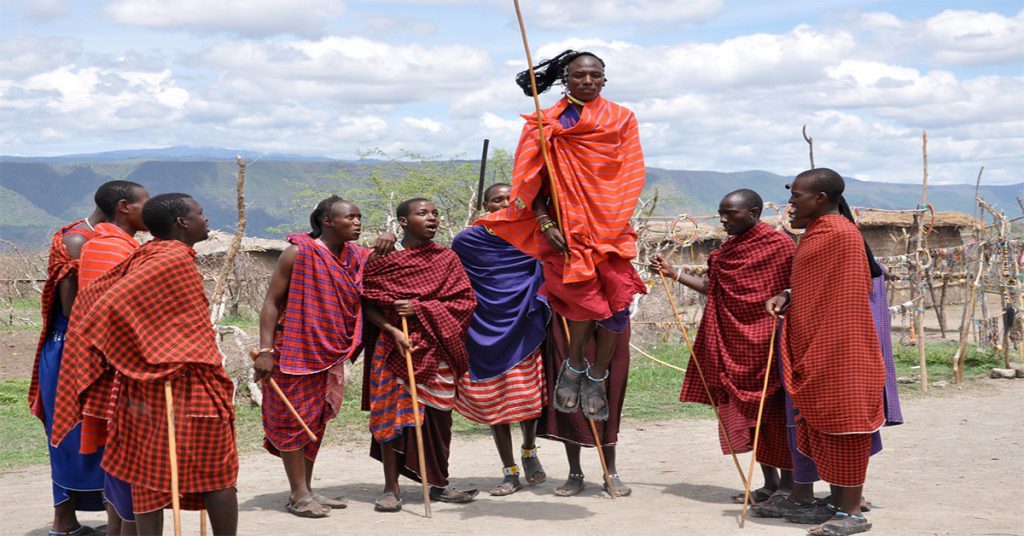
Maasai are the largest and famous tribes in East Africa, they are famous for their lifestyle and fascinating culture. In Tanzania, the Masai are especially prominent in and around Ngorongoro and the Serengeti, while Kenya’s Masai Mara takes its name from these proud people.
The Masai are predominantly cattle breeders, eating meat and milk that they produce themselves. Cattle products are a central part of the Masai diet, with other animals such as sheep being more for special occasions than day to day use.
Ngorongoro is the home of the pastoral Maasai, who have been allowed to live in the conservation area, a pioneering experiment in multi-purpose land use where people, their livestock and wildlife coexist and share the same protected habitat. There were other tribes that also occupied Ngorongoro, some as cattle herders, like the Datoga, and others as hunters, like the Hadzabe; and then moved on, sometimes forced out by other groups.
The Maasai managed to live in Ngorongoro in substantial numbers, their traditional way of life allowing them to live in harmony with the wildlife and the environment.
Ngorongoro Conservation Area Authority supports and initiates community-based projects, such as ecotourism in the form of these cultural bomas.In partnership with the Maasai council known as Ngorongoro Pastoral Council, the Ngorongoro Conservation Area Authority oversees the progress of these cultural bomas, and also enables Maasai guides to conduct walking safaris and other part-time work at the lodges and at the headquarters of the Conservation Area.
Visitors to the Ngorongoro Conservation Area can learn about the culture of the Maasai and take photographs or buy original Maasai handicrafts at designated areas known as cultural bomas, there is an entrance fee to be paid before visiting the designated boma.
There are several designated Maasai boma along the Northern Tanzania Safari circuit, the most common ones include the following;
- The Seneto Maasai Boma on the western slopes of the Ngorongoro Highlands about two hundred metres off the main road to Serengeti is one of the most famous cultural visitor points for guests
2. Kiloki Senyati Cultural Boma; Situated on the main road to Serengeti, 7 km south-west of the Olduvai Gorge Information Center
3. Irkeepus which is located in the Ngorongoro Highlands and a visit can be combined with a trek of Olmoti or Empakaai Crater.
4. Loonguku Cultural Boma; Situated on the main road to Serengeti, 10km before the turn-off to Olduvai Gorge.
One in the designated boma, visitors will be shown around the Maasai Boma, and are welcome to explore the huts where Maasai families live and learn a few things about their way of living. The huts, normally built by women, are made of wood, mud and cow dung. It’s advised to arrange with the local guide or tour operator before deciding on a visit to the Maasai boma, having a local guide will help you choose the best cultural boma.
Where to stay in Ngorongoro
There is a varied choice of accommodation while in Ngorongoro, depending on your taste and budget. Accommodation facilities available include; Lodges, eco-lodges, country cottages, tented camps, bush camps, mobile camps and public camps.
Within the Ngorongoro Conservation Area, with the exception of Simba ‘A’ public campsite near the NCAA headquarters, the campsites are all classified as “special campsites”. This means that they are for exclusive use and generally have no facilities. Usually, they are designed for self-sufficient safari operations, which bring everything with them. Most are large sites, but a few of them, e.g. on the rim of Empakaai Crater, is designed for small numbers of backpackers. Camping generally is not allowed in the Crater itself. Book campsites through the NCAA headquarters’ office or in Arusha – Ngorongoro Information Center
There are other modern lodges, hotels, and guesthouses outside the Conservation Area, especially in and around Karatu, that are especially suitable for visitors planning day trips or those looking for budget accommodation.
Some of the luxury lodges situated within and outside the Ngorongoro Conservation Area include the following;
Ngorongoro Serena Safari Lodge
Location: Ngorongoro Serena Safari Lodge is perched at the edge of the magnificent Ngorongoro Crater, a short drive from the Crater descent road and adjacent to Serengeti National Park. The lodge is 180 kilometres and a four-hour drive from Arusha. The Lake Manyara airstrip is 90 minutes from the lodge, and “meet and greet” and transfer services are available.
Accommodation:
There are 75 rooms 75in total, 1 Suite, 44 rooms with twin beds, 15 rooms with double beds and 15 rooms with triple beds.
Standard Rooms at Ngorongoro Serena Safari Lodge feature elegant interior spaces infused with a locally inspired décor and private stone balconies overlooking the Crater.
Kimaba Suite has a spacious bedroom that is luxuriously appointed with a king bed with a walk-in mosquito net, sumptuous furnishings, a dressing area and a natural stone ensuite bathroom. The elegantly appointed sitting room enjoys panoramic views and is tastefully and relaxingly furnished while offering a fully stocked mini-bar, digital multi-channel TV and direct dial telephone. The room also features a generous stone-built balcony overlooking the magnificent Ngorongoro Crater. 24-hour room service is available and fruit and wine will be laid out to welcome you
Facilities & Services: The split-level rock-built dining and bar area features a wall of windows and a broad viewing terrace, with spectacular views of the crater below. Other facilities include an under-canvas conference room with raised wooden floor, a business centre, 24-hour medical service, a curio/gift shop, laundry, valet & shoeshine services.
Gibb’s Farm
Gibb’s Farm is located in Karatu, just outside of the Ngorongoro Crater in Northern Tanzania. This is on the main safari route from Arusha, Tarangire National Park and Lake Manyara on the way north to the Ngorongoro Crater and the Serengeti. The farm is a 35-minute drive from Lake Manyara Airstrip and 2.5 hours from Arusha Airport.
Gibb’s Farm is a true oasis, offering a luxurious, welcome retreat for a few days’ respites while on safari, an extended vacation or a honeymoon getaway. The farmhouse has a living room and dining area, along with 17 beautifully decorated guest cottages providing an elegant, comfortable home away from home.
Facilities & Services
The farmhouse offers farm life experiences, Massage Treatments, Farm walks, community and cultural experiences, Safari Adventures and Active Experiences and Wedding & Honeymoon services.
The Octagon Safari Lodge
Octagon Lodge is a small and private lodge located twenty minutes from the Ngorongoro Conservation Area Gate in Karatu, Tanzania.
Ideal for visitors on a trip, it is situated amidst colourful and exotic gardens and provides a perfect base for visiting the Northern Parks of Tarangire, Lake Manyara, Ngorongoro Crater and Serengeti.Its located twenty minutes from the Ngorongoro Conservation Area in Tanzania.
Accommodations
The lodge offers traditionally designed en-suite chalets, rooms, family rooms and two-bedroom cottages that offer comfort for everyone. The lodge also has various facilities for disabled guests.
Facilities & Services
The talented chefs of Octagon lodge bring to the table flavours of Europe and the tastes of Africa using their organically grown fresh farm produce. The Irish Bar created by the founders will never fade, unique to Tanzania and one of the only Irish bars in Africa. A full selection of single malts, Irish whiskey, wines and spirits are available in the Irish Bar.
Ganako Luxury Lodge
The Ganako Luxury Lodge is located at Ganako Hills at an approximate distance of 800 meters from the Ngorongoro Reserve Forest. It is about 157 kilometres or 02:40 hours drive from Arusha City centre and 5 kilometres or 10 minutes drive from Karatu Township
The Ganako Luxury Lodge is a perfect hideaway destination for the most desired safari adventures, offering real comfort and absolute tranquillity with a mixture of romance and wildlife, spiced with elegance and warm African hospitality, in an amazing setting of African reserve forest and wilderness. An eco-friendly lodge with luxurious 31 Executive Cottages, and 3 Presidential Suites, features a spacious bathroom with Jacuzzi, and a modern fireplace and are designed for quality and convenience with a touch of selected African artworks.
Facilities & Services
Rooms have private balconies. Complimentary wireless Internet access keeps you connected, and satellite programming is available for your entertainment. Private bathrooms with separate bathtubs and showers feature jetted bathtubs and complimentary.
The lodge offers recreation opportunities such as a health club, wireless Internet access and concierge services. The lodge’s restaurant serves breakfast, lunch, and dinner, or stay in and take advantage of 24-hour room service. Quench your thirst with your favourite drink at a bar/lounge. Featured amenities include a business centre, a 24-hour front desk, and laundry facilities. Free self parking is available onsite.
Acacia Farm Lodge
Acacia Farm Lodge is strategically located between the Tarangire and Lake Manyara National Parks on one side and Ngorongoro Conservation Area and Serengeti National Park on the other, this is a perfect base from which to explore these world-famous reserves as well as enjoy many other adventurous activities and impressive cultural experiences found in the local area.
The lodge has 28 spacious, contemporary African-styled chalets have a comfortable lounge and en-suite bedroom all with a mini bar, coffee-making facility, air-conditioning, satellite television, Wi-Fi and other modern and appropriate amenities plus a private balcony with sweeping views of the farm, the surrounding scenic landscape and the most amazing sunsets.
There are several inter-connected rooms suitable for families with young children and all the rooms are wheelchair accessible by means of ramps.
Facilities & Services
Acacia Farm Lodge has numerous top-class facilities for the in-house guests to use including the main public area where there are a gorgeous lounge and a cosy bar as well as an intimate dining room and a lovely coffee shop. A few meters away you will find a well-stocked curio shop, an inviting Swimming Pool and its bar area as well as a well-equipped Gym and a refreshing Spa. Also, there is a little Business Centre and a forty seater conference room conveniently located near the public area equipped with all the standard facilities.
Ndutu safari lodge
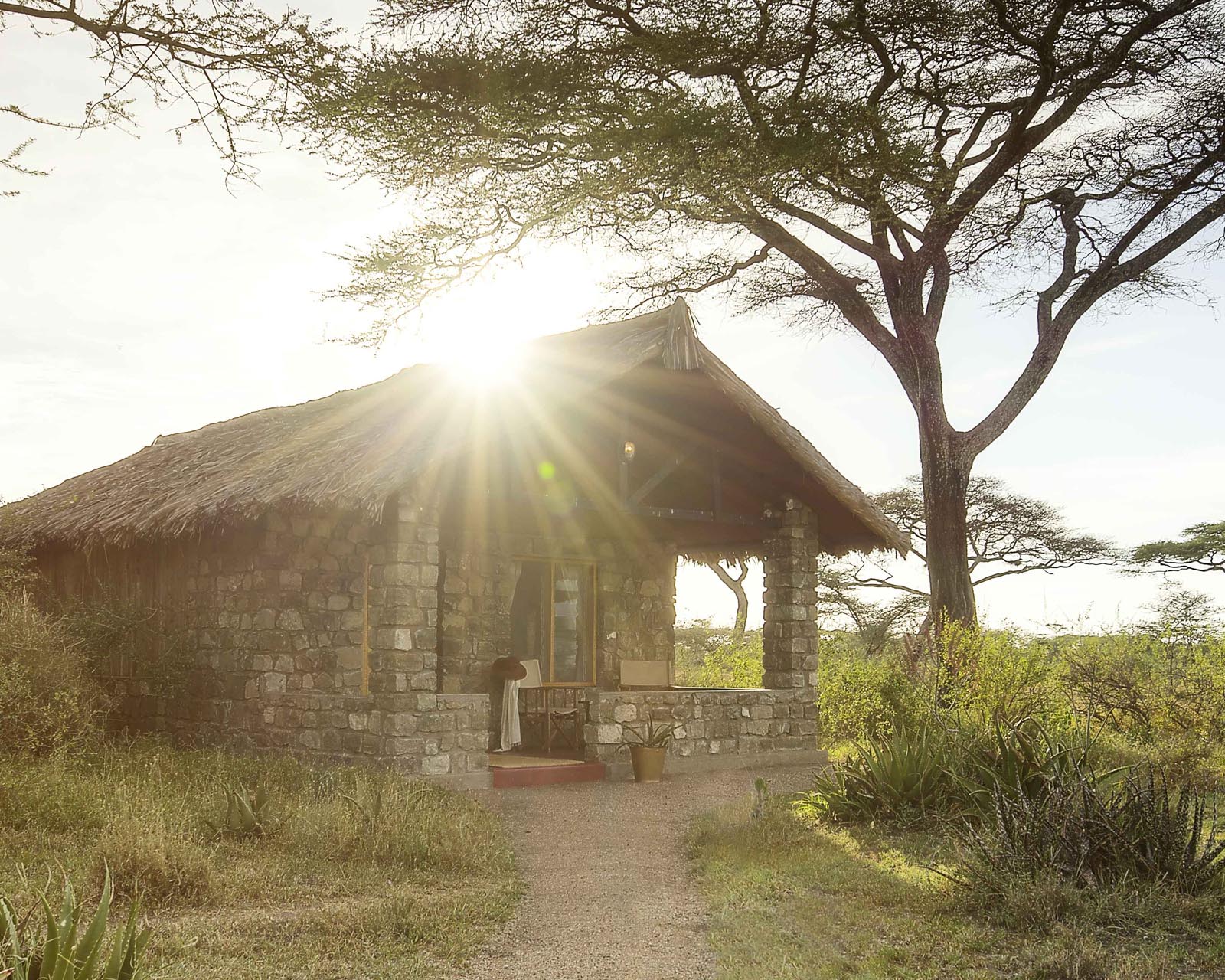
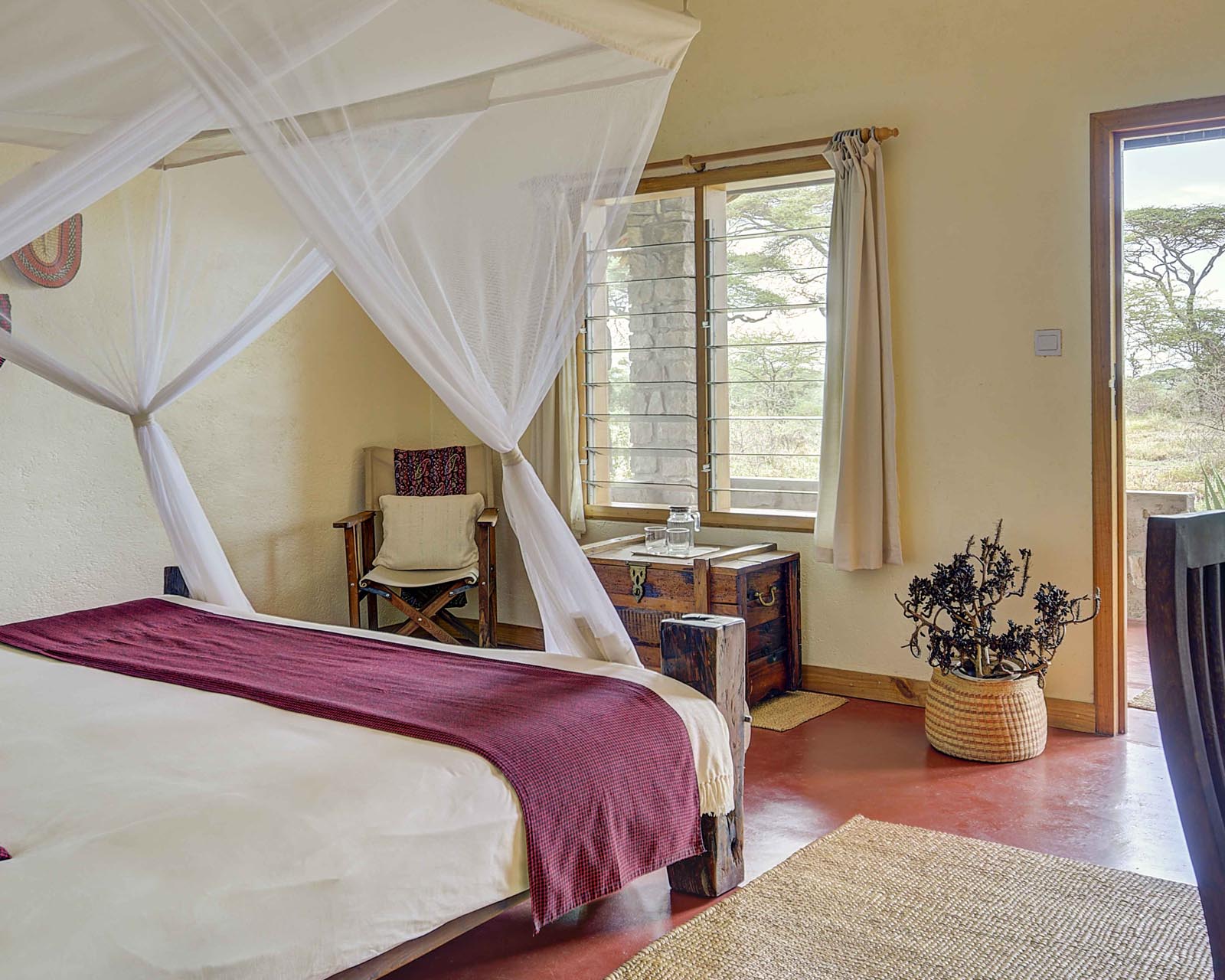
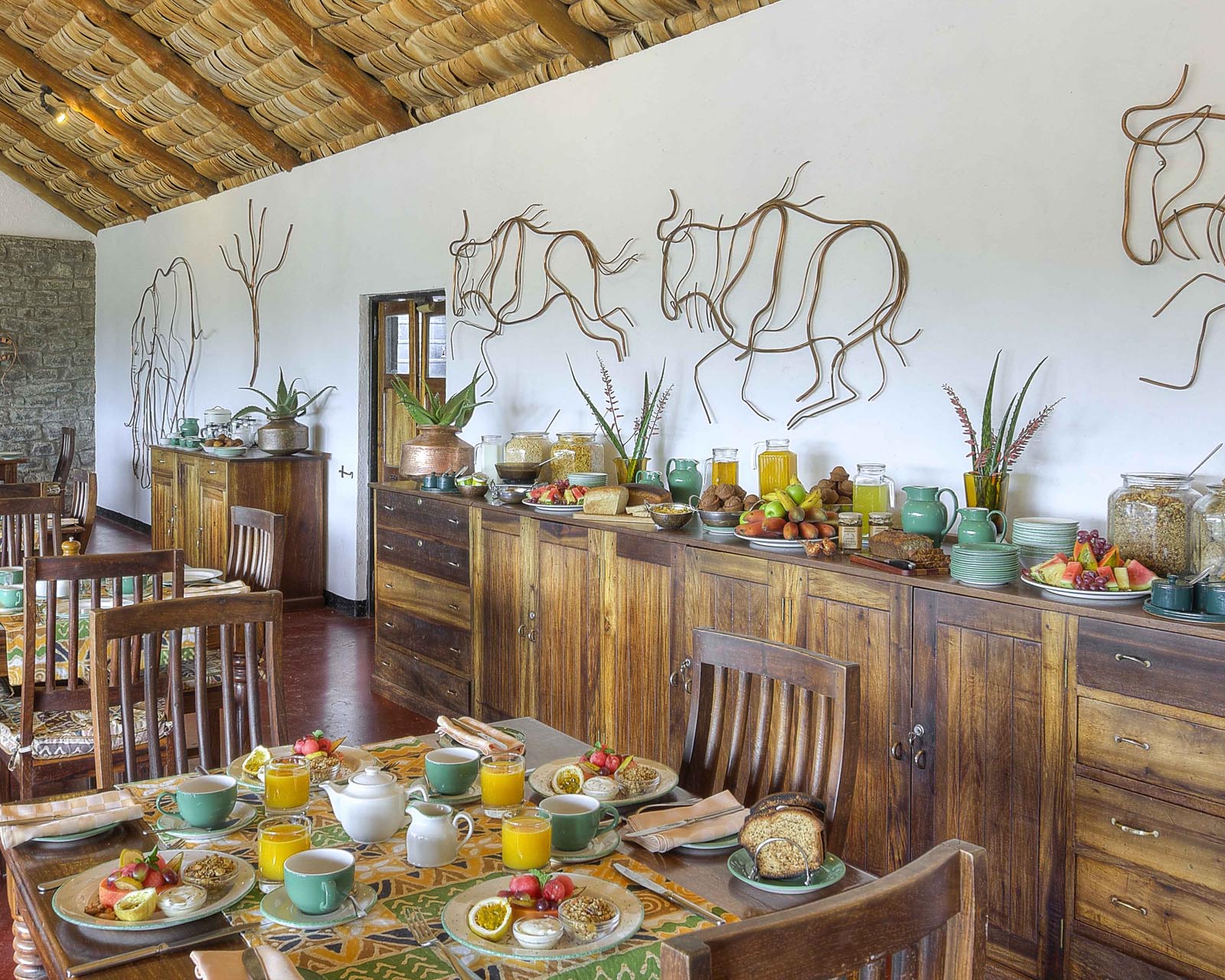
Location: Ndutu Safari lodge is located in the Ngorongoro Conservation Area (NCAA) of Tanzania which is between the Ngorongoro Crater and the Serengeti National park on the short grass plains.
It’s about 30km from Naabi entry gate to Serengeti National Park, one kilometre from Ndutu airstrip and about 280km drive from Arusha town.
Accommodation:
● 34 stone and thatch Lake-front cottages, private veranda, that extend from the central, open-sided bar, lounge and dining room.
● 3 Rooms for Tour Leaders, with a private veranda.
● 1 stand-alone Cottage with 2 separate bedrooms (1 double, 1 twin), a spacious living room, a dining area and 2 private verandas. It’s quite remote: not ideal for families with small children.
● The cottages are made from local materials and offer comfortable tasteful accommodation.
● All rooms have en-suite shower facilities
Facilities & Services: The main and central building houses an open-sided bar, lounge and dining room. Other facilities include laundry, internet access, telephone & fax services, a curio/gift shop, a campfire, and a walking safari with an armed ranger arranged directly with NCAA ranger post less than a kilometre away from the lodge.
Ngorongoro Sopa Lodge
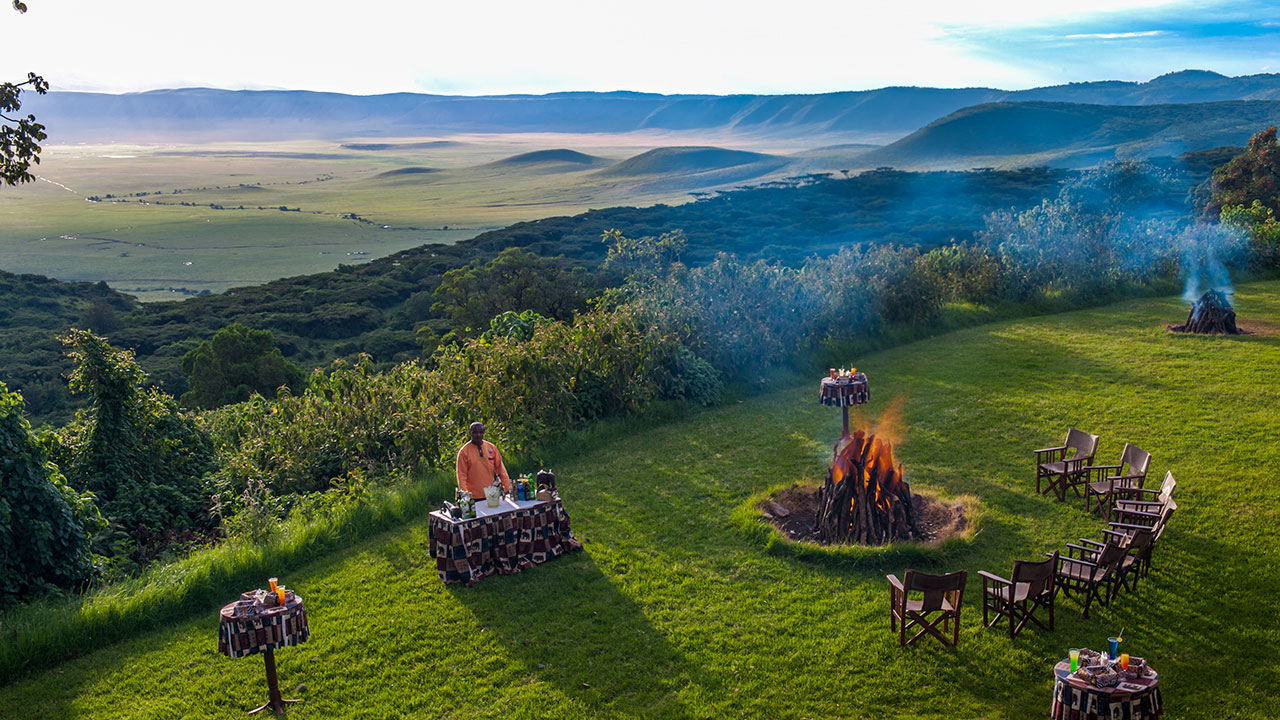
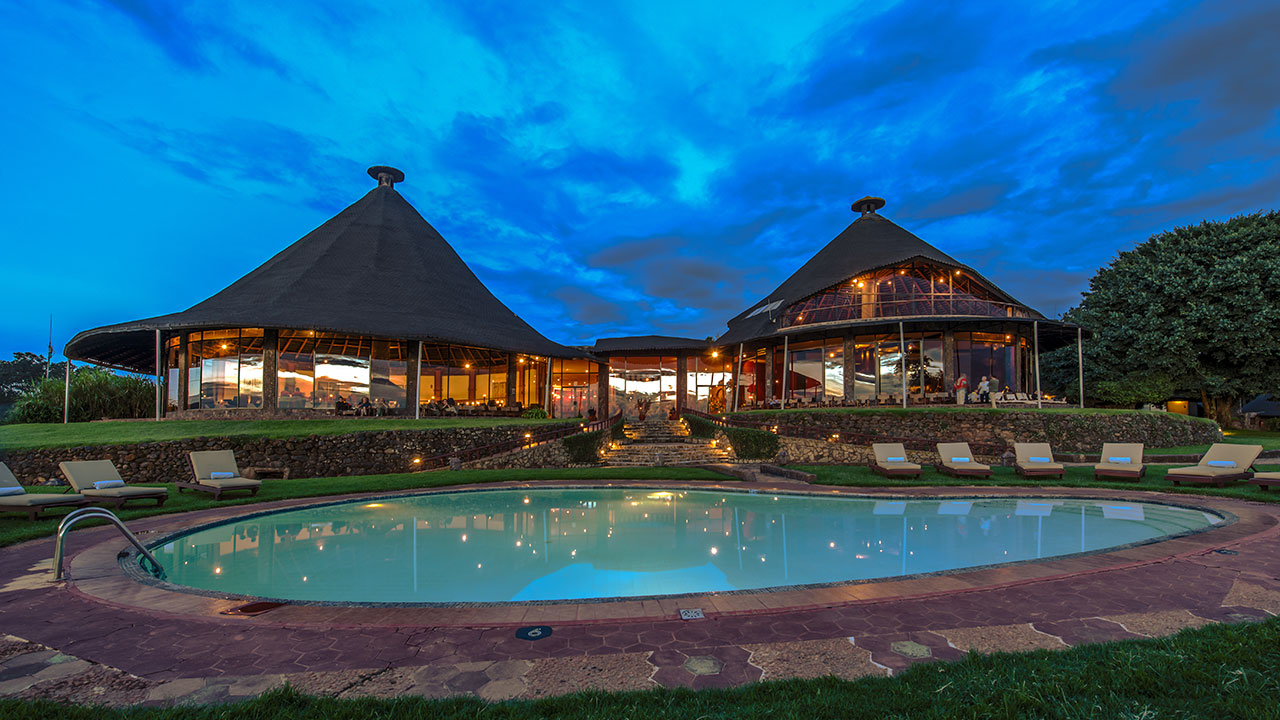
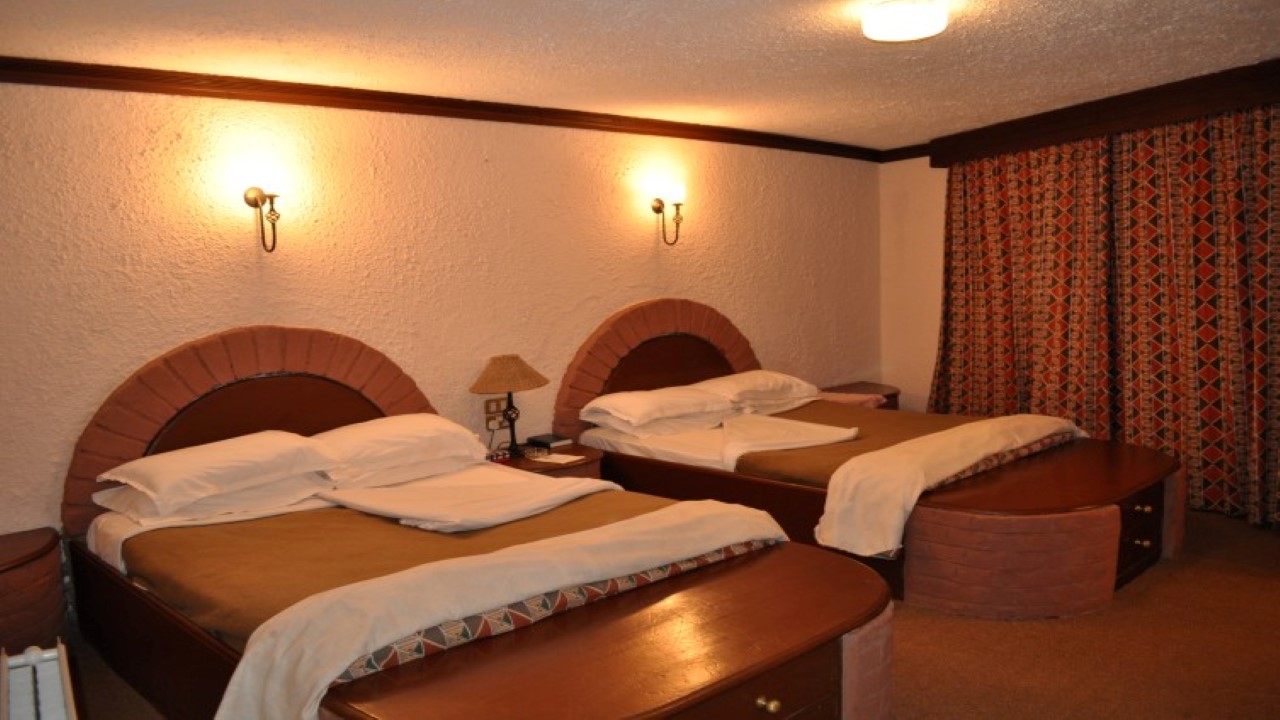
Location: Ngorongoro Sopa Lodge is located within the Conservation Area on the eastern rim of the Ngorongoro Crater, (2375m) offering spectacular views down into the crater floor and of the sunsets over the western horizon. It is about 189km from Arusha town.
Accommodation: The lodge has 97 rooms. Includes 5 inter-connecting rooms & 1 wheelchair-accessible room.
All rooms are equipped with amenities to ensure maximum comfort during your stay with us. Among these are our wake-up calls and complimentary coffee and tea, all of which will help to kick start an early morning game drive
Facilities & Services: Bar, lounge, restaurant, TV in the conference room, outdoor dining, swimming pool, gift shop. WiFi in public areas.1 conference room. Accommodates 80 people, theatre style.
The lodge offers Game drives, crater excursions, bush lunch, nature walks, and card games.
Ngorongoro Rhino Lodge
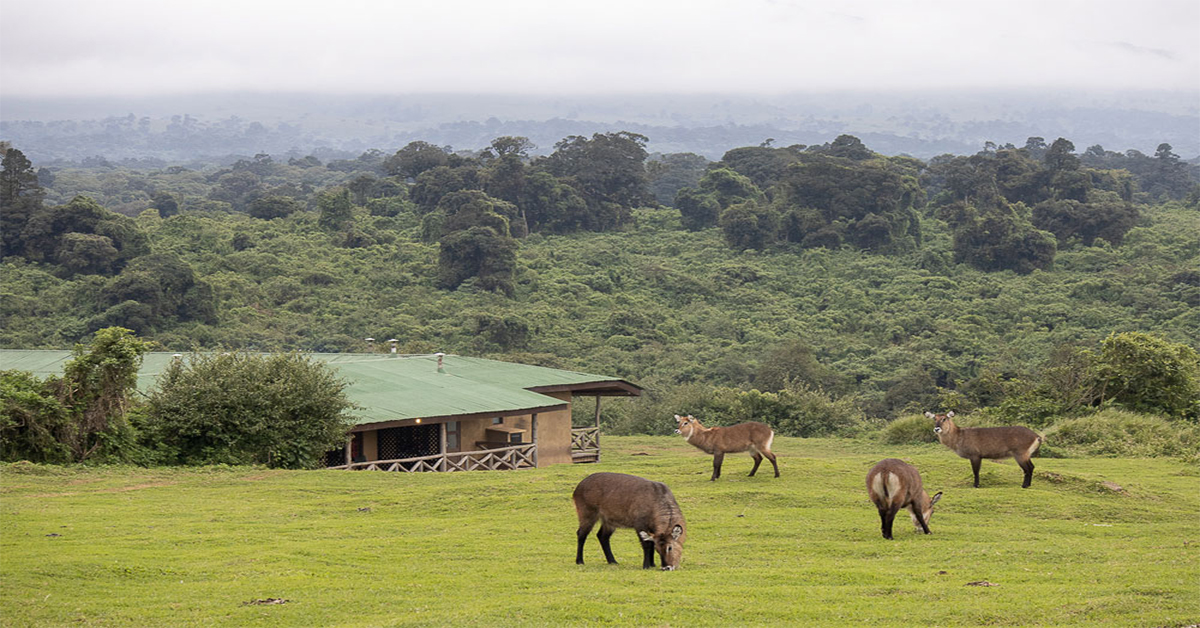
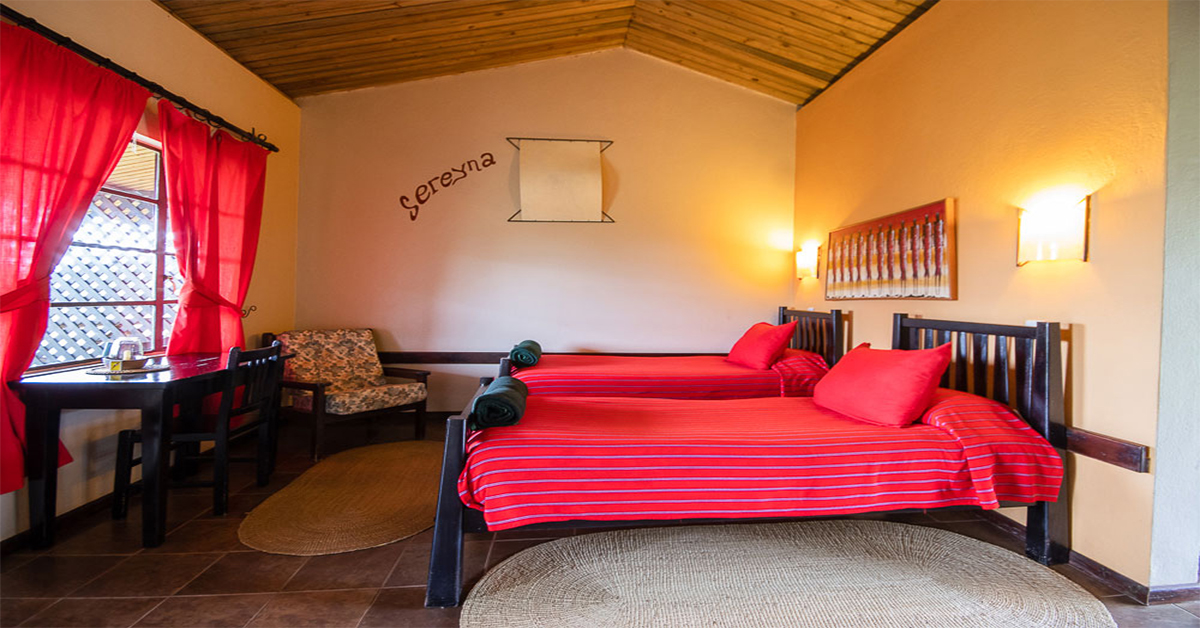
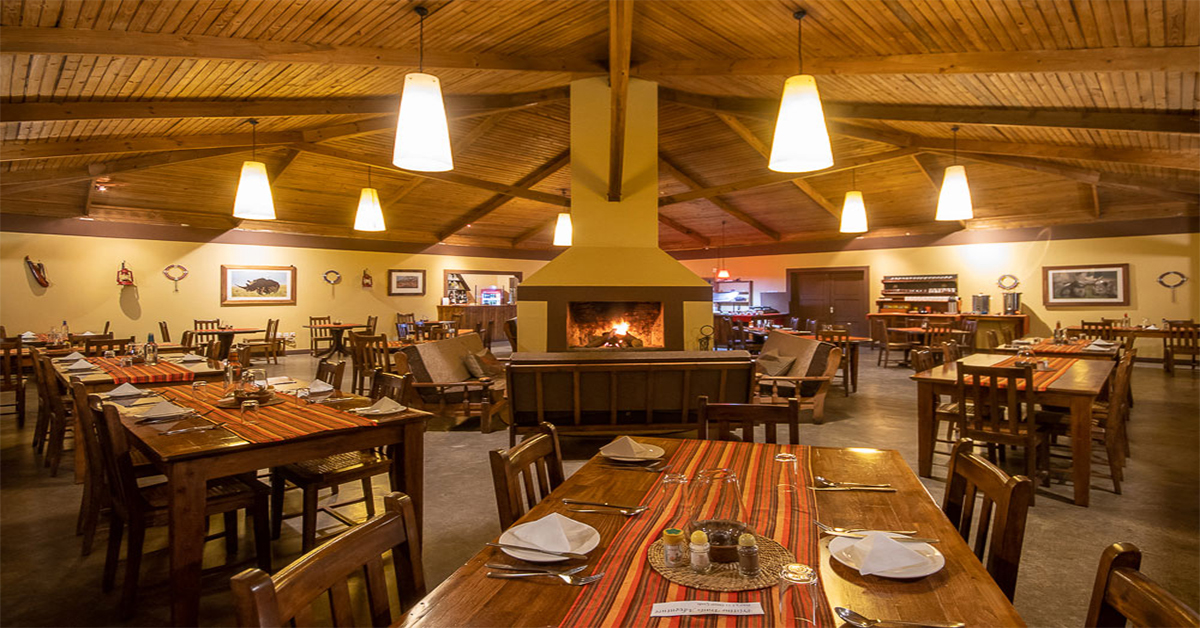
Location: The lodge is situated at an altitude of 2,200 metres, it is only 20 minutes to reach the Seneto descent road into the Crater, and the Lerai ascent road is less than 5 minutes drive away.
Accommodation: There are 24 guest rooms, all with a verandah overlooking a stretch of high montane forest. Each room has its own shower, toilet and hand basin.
Facilities & Services: In the bar/dining room there are two large fires which are a natural focus where our guests like to meet and exchange stories of the day.
